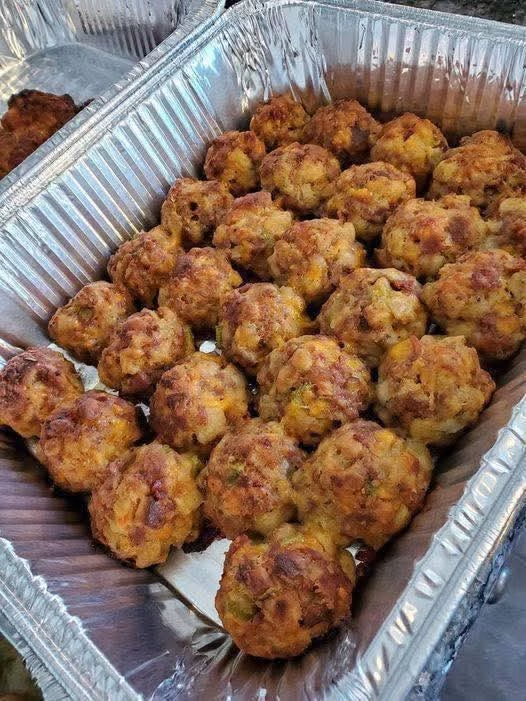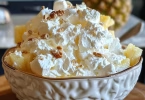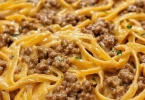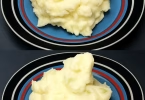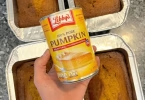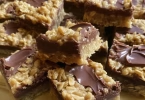The Ultimate Stuffing Balls Recipe: Crispy, Savory & Irresistible
Few dishes evoke a sense of comfort, family gatherings, and festive cheer like stuffing. Its rich aromas, herb-infused flavors, and soft, buttery texture have made it a timeless favorite around the world. But traditional stuffing, while delicious, often presents challenges—it can be soggy, difficult to portion, or simply too cumbersome to serve in a buffet-style dinner. That’s where our Stuffing Balls shine. These bite-sized morsels transform a classic side dish into a versatile, convenient, and visually appealing treat. They are crispy on the outside, soft and flavorful on the inside, and infused with herbs and spices that make each bite irresistible.
Why Stuffing Balls Are the Perfect Upgrade
Turning stuffing into balls does more than just make it cute and easy to serve. The shape enhances texture—edges crisp beautifully while the interior remains moist. Each ball becomes a self-contained flavor bomb, perfect for dipping in gravy, serving alongside roasted meats, or even enjoying as a snack. They are also practical: you can prepare them ahead of time, freeze them, or reheat them without compromising quality. For busy households, entertaining guests, or holiday gatherings, this form of stuffing is both efficient and elegant.
Another advantage is portion control. It’s much easier to serve stuffing balls compared to a large, uncut dish, and everyone gets an equal share. Children love picking up the small, playful balls, while adults appreciate the sophisticated flavor and texture combination. The mix of cornbread and traditional low-carb bread also ensures that every bite has a delightful contrast of sweet, soft, and slightly crunchy textures.
The Ingredients: More Than Just Bread and Herbs
Every component in this recipe plays a crucial role in flavor, texture, and aroma. Understanding the purpose of each ingredient allows you to tweak the recipe to your taste and even experiment with variations.
- Celery (1 cup, finely chopped): Adds a subtle crunch and freshness that balances the richness of the bread and butter. Celery’s natural water content also helps keep the stuffing moist while baking.
- Parsley (½ cup, chopped): Brightens the flavor and adds a pop of color. Parsley has mild herbaceous notes that lift the heaviness of bread and butter.
- Sage (½ tbsp, ground): The classic stuffing herb, sage provides a warm, slightly peppery, and earthy flavor that complements poultry and meats beautifully.
- Thyme (1 ½ tsp, dried): Adds subtle complexity. Thyme’s earthy and slightly minty undertones enhance the savory depth of the stuffing.
- Salt and black pepper (1 tsp each, kosher recommended): Essential for seasoning. Salt amplifies the natural flavors of the ingredients, while pepper adds a gentle kick.
- Low-carb bread (6 cups, toasted and chopped): Provides structure and chewiness. Toasting helps form a crispy exterior when baked, while still absorbing flavors from the broth and butter.
- Cornbread stuffing (6 cups): Adds a slightly sweet, crumbly texture. Cornbread has a naturally moist texture that keeps the stuffing balls soft inside while creating a contrasting crispy crust outside.
- Egg (1 large, slightly beaten): Acts as a binder, ensuring that the balls hold their shape during baking. It also enriches the flavor slightly, adding subtle creaminess.
- Chicken broth (1 can): Infuses the balls with savory depth and keeps them moist. Broth is preferable to water because it adds layers of flavor.
- Butter (for sautéing): Adds richness and creaminess. It also helps release the aroma of onions, celery, and herbs during cooking, creating an irresistible fragrance that fills the kitchen.
Step-by-Step Instructions for Perfect Stuffing Balls
Pro Tips for Exceptional Stuffing Balls
Serving Suggestions and Pairings
Stuffing balls pair beautifully with roasted poultry, beef, or even vegetarian mains. For festive occasions, serve with gravy, cranberry sauce, or a light green salad. As a fun appetizer, pair with mustard aioli, garlic butter dipping sauce, or a creamy cheese dip. They also make a great addition to brunch tables alongside roasted vegetables or scrambled eggs.
The History and Evolution of Stuffing
Stuffing has a rich and fascinating history. In ancient Rome, cooks would stuff meats with a mixture of herbs, grains, and vegetables to enhance flavor and preserve meats. Over centuries, European households adopted the practice, evolving it into bread-based stuffing, often infused with regional herbs

